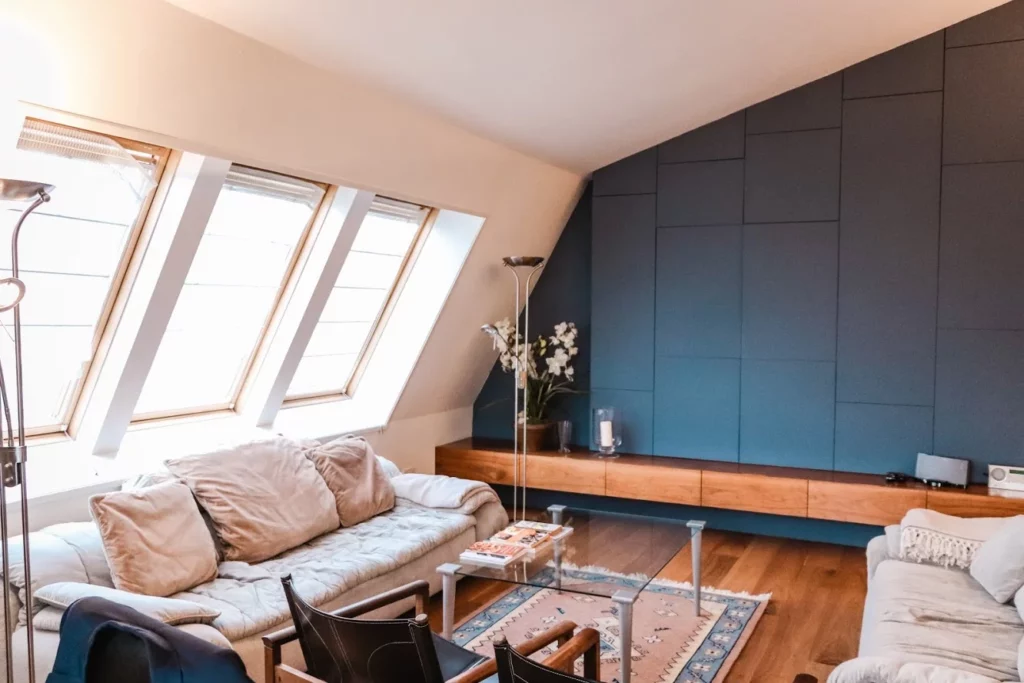Wondering what to do about uncomfortable, drafty windows? Looking for eco-friendly home improvement ideas? Improved window insulation can reduce vulnerabilities in your building envelope, meaning that less of your valuable heat escapes, and your windows are more comfortable to sit by.
Here are some window improvements to pursue if your windows are uncomfortably drafty.
1. Double-Glazed Windows
Windows with double or triple glazing can make a difference if your current windows are hemorrhaging heat and you don’t feel comfortable sitting next to them. In this case, better-insulated windows will help make the window-adjacent areas of your home more usable in winter.
2. Shutters or Storm Windows
What if you already have double-glazed windows (or can’t afford to replace your windows right now) and still need more insulation value? It might be worth investing in storm windows or shutters. These both protect your window from outside by reducing the amount of cold air that flows across the glass and blows through any cracks.
As you can imagine, shutters are the more solid of the two, although they also block the view and any natural light so you’ll probably only want to close them at night. Storm windows allow you to keep enjoying your view while protecting your windows both day and night from cold air. They can even come with low-emissivity glass, making their insulation value even better.
3. Window Inserts
Window inserts are basically the opposite of storm windows: they fit inside the window frame on the interior of the window, rather than hanging over the outside of the window. If your windows aren’t a standard size and shape or if they’re a little crooked because you live in an old building, you may have to have your window inserts custom-made.
Inserts work a bit like double glazing since they trap a still layer of air between the insert and the window glass. This reduces heat transfer through convection and conduction, although not as efficiently as actual double glazing. Double-glazed windows use a layer of noble gas or even a vacuum between the two layers to reduce heat transfer as efficiently as possible.
4. Window Film
Once you have storm windows, double glazing, and/or window inserts in place, you’ve done a lot to stop heat loss through convection and conduction. But heat rays can still radiate out through the glass. A low-emissivity window film can help to block thermal rays while still allowing visible rays (light) to pass through the window, so you still get sunlight but lose less heat.
5. Better Window Frames
Check what material is used for your window frames. You may need to insulate them or choose a better-insulated frame material when you have your windows replaced next. Metal window frames conduct heat quite efficiently, helping it escape from your house, which is not optimal. Fiberglass and vinyl tend to be better choices insulation-wise for window frames.
6. Caulking and Weatherstripping
Last comes the weatherproofing step that many homeowners default to first: checking the caulking and weatherstripping. Your window should have caulk on the outside where the glass connects to the frame and where the frame connects to the side of your house. Check for dry, cracked, or missing caulk and replace it (after removing the old caulk) or use expanding foam.
Weatherstripping can go along the bottom of the window where it opens and closes, forming a tighter seal so wind won’t sneak in under the sash. You can also place weatherstripping or rope caulk along the inside of the window panes where they meet the frame and around the outside of the frame where it meets the wall.
These six improvements can help improve your windows’ insulation value by reducing heat transfer through the glass, lessening heat loss through the frames, and blocking air drafts around the panes and frames. For more information about installing double-glazed windows with efficient frames, get in touch with Pella Windows and Doors of Wisconsin today.















